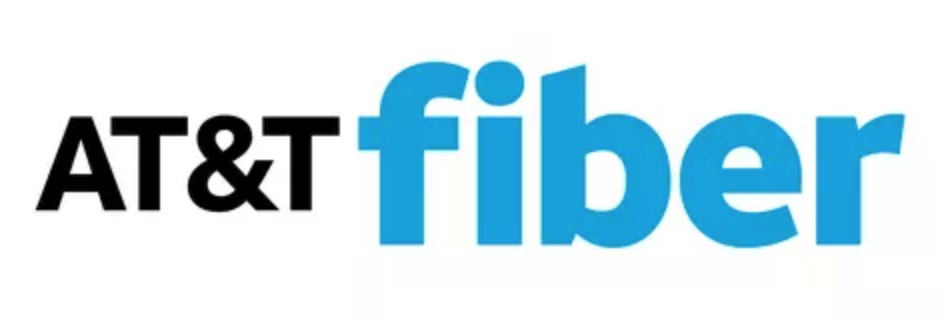AT&T 2nd-year prices AT&T fees AT&T pricing sheet Why did my bill go up? FAQ
AT&T Internet price changes after 12 months
AT&T applies a flat $10 per month discount to DSL or IPBB plans.
The discount times out after the first 12 months of service, at which point the prevailing rate for service applies. While the “prevailing rate” may change during your first year as a customer, the current rate is $65 per month.
Note that advertised pricing includes the Wi-Fi gateway leasing fee, so you cannot save extra money if you opt to use your own equipment.
AT&T re-introduced new customer discounts on premium fiber plans in 2023–2024, with a $25 per month ongoing discount offered to new customers as well as existing customers willing to upgrade to 2–5 Gbps plans.
Because the $25 ongoing discount is advertised as “ongoing” and doesn’t guarantee a specific end date, they are likely to only remove the discount for customers who fail to pay bills on time.

Actual rates of AT&T Internet by plan
| Plan name | Advertised price | Price without discount | Price difference |
|---|---|---|---|
| AT&T Fiber Internet 5000 | $225/mo. | $250/mo. | $25/mo. |
| AT&T Fiber Internet 2000 | $125/mo. | $150/mo. | $25/mo. |
| AT&T Fiber Internet 1000 | $80/mo. | $80/mo. | $0/mo. |
| AT&T Fiber Internet 500 | $65/mo. | $65/mo. | $0/mo. |
| AT&T Fiber Internet 300 | $55/mo. | $55/mo. | $0/mo. |
| AT&T Internet 25 | $55/mo. | $65/mo. | $10/mo. |
The current pricing scheme is a big departure from the norm in the cable and internet industry. The vast majority of providers use first-year pricing to lure new customers, and remove the discount once the customer is set up on auto-billing.
AT&T has begun to phase out this practice, and no longer uses 12-month pricing on Fiber plans.
Back in 2021, the pricing structure for fiber plans was as follows:
The AT&T Fiber 1000 plan cost $80 per month after the first 12 months of service, making it the cheapest AT&T plan. Including Wi-Fi fees, the final bill was typically $90. New customers could sign up for $60 ($70 including fees), at a $20 per month discount for the first year.
The middle-tier AT&T Fiber 300 plan cost $65 per month after the 12 month new customer discount expired, for a total bill of $75 including the Wi-Fi fee. The final cost was 44% higher than the $45 advertised price for new customers.
The base AT&T Fiber 300 plan increased to a cost of $55 per month after the first year of service, which added up to $65 per month including Wi-Fi fees. The final price represented a relatively large 57% increase on the $35 per month (pre-fees) sign-up rate, which was AT&T’s most affordable consumer-grade plan at that time.
The 2–5 Gbps plans were not yet introduced prior to 2024.
AT&T alternatives like Earthlink and Ziply Fiber are expanding rapidly in 2024, thanks to increased demand for fast home internet during Covid-19.
As a result, you might be able to cut off AT&T and switch to a faster, cheaper internet provider.
Call our partner BundleYourHome for live help choosing the cheapest Spectrum alternative. Their agents can compare options at your address and advise which is best for your needs.
Get Help Switching NowAT&T Internet pricing including fees
There are two fees you need to be aware of that affect the actual cost of AT&T internet-only service:
- Installation fees
- Cancellation fees
Installation fees: add $99 to the first bill for most plans
AT&T charges a standard $99 installation fee for new customers, so you can expect that your first bill will be $99 higher than following bills. You can be refunded for this fee if you cancel in the first 15 days.
This fee is often waived if you sign up online rather than over the phone, but it depends on if your address already has an ONT (Optical Network Terminal) installed or not.
If you don’t see the fee waived when signing up online, it’s also worth calling and requesting the fee be removed, particularly if your home or apartment is already wired for AT&T Fiber (e.g. if the last tenant used it).
It’s not guaranteed, but in some cases a sales agent can waive the installation fee in order to get you signed up. However, if they have to send a truck to install the ONT on the side of your house for first-time fiber service at the location, arguing out of the fee is less likely to work.
Cancellation fees: only for contract plans
Generally, the amount charged on your first and last bill will be higher than your standard month-to-month bills. When you cancel, this is because cancellation fees come into the picture.
I’ve written up a full guide to cancelling AT&T internet service and all the fees involved here.
In summary: to their credit, AT&T does not charge a blanket “cancellation fee” or “disconnect fee” like some of their competitors (*cough* Frontier).
They do charge early termination fees for TV plans, though, which can put you on the hook for as much as $360. It’s prorated based on how much time is left in your contract, at a rate of $15 per month.
Wi-Fi fees no longer charged on AT&T internet, including DSL plans
Historically, the main fee that drove up AT&T bills was their $10 per month Wi-Fi gateway leasing fee. Customers saw this item listed as “Equipment” on monthly bills.
The AT&T Wi-Fi equipment fee effectively added $10 to all internet bills. This allowed the company to advertise below-market rates for service, as low as $35 — but with extensive fine print as shown in this backdated screenshot:

The change is likely a response to new regulation prohibiting internet providers from charging Wi-Fi-related leasing fees to customers who use their own equipment.1
AT&T TV programming costs drive higher prices on DIRECTV, STREAM, and all other AT&T TV products
Legacy U-verse TV and DirecTV customers can expect that the programming cost line items on their bills will go up annually or semi-annually.
These fees vary widely from place to place, particularly for regional sports fees and other regional programming costs.
AT&T maintains a very detailed support page on this topic.
The summary is: if you want a TV bundle, you’ll pay programming fees. You will be warned of the fee changes by email around mid-year, and the price changes usually go into effect in January.
Programming fees will typically add $6–25 to the price of your plan, depending on how many add-ons and what tier your bundle is.
Why did my AT&T internet price go up?
For many AT&T DSL internet customers, the second-year price change comes as a surprise.
In short, if you’re confused why your internet bill went up, the reason is that you no longer qualify for their standard $10+ new customer discount.
Because the final price is buried in the fine print when you sign up, customers frequently sign up without realizing that the price they see advertised in large print is not the actual price of service, minus discounts and plus fees.
The final price of each internet-only plan is effectively $30 more than what you see advertised, once you factor in the removal of the new customer discount and the addition of the required $10 Wi-Fi equipment fee.

AT&T TV plans are also subject to regional licensing and programming fees, which essentially means that AT&T is passing down the cost of maintaining access to regional sports, live TV, and etc down to the customer when their price to access that content changes.
Handling TV fees as variable add-on line items allows them to make consistent income minus costs from subscribers. Otherwise, their net profit per user would vary annually based on the fees they pay for particular sports and other paid programming (which is to say, the majority of cable TV content) and (likely) negatively impact shareholders.
Summary: AT&T promotional and average pricing
Ultimately, you should consider two prices when comparing AT&T internet to other options — the the average price over two years and the final price after new customer promotions expire.
Here's a summary of the entry, 2-year average, and final price for each AT&T internet plan on the market:
AT&T Internet-only final and averaged prices
| Plan name | 1st-year price | Average price over two years | Final price |
|---|---|---|---|
| AT&T Fiber Internet 5000 | $225/mo. + $0 fees | $238/mo. + $0 fees | $250/mo. + $0 fees |
| AT&T Fiber Internet 2000 | $125/mo. + $0 fees | $138/mo. + $0 fees | $150/mo. + $0 fees |
| AT&T Fiber Internet 1000 | $80/mo. + $0 fees | $80/mo. + $0 fees | $80/mo. + $0 fees |
| AT&T Fiber Internet 500 | $65/mo. + $0 fees | $65/mo. + $0 fees | $65/mo. + $0 fees |
| AT&T Fiber Internet 300 | $55/mo. + $0 fees | $55/mo. + $0 fees | $55/mo. + $0 fees |
| AT&T Internet 25 | $55/mo. + $0 fees | $60/mo. + $0 fees | $65/mo. + $0 fees |
Frequently Asked Questions
How much is AT&T Fiber Internet 300 after 12 months?
The advertised cost of AT&T Fiber Internet 300 was discounted to $35 per month in 2021, and raised to $55 plus a $10 router fee after that period. In 2022 AT&T switched to a flat-rate system with no first-year discounts. The current price of AT&T Internet 300 in 2024 is $55 per month, with no introductory discounts.
How much is AT&T Fiber Internet 1000 after 12 months?
In 2032, AT&T no longer places price increases on customers after the first 12 months of service. The gigabit-speed AT&T Fiber 1000 plan previously offered $60 per month rate for new customers, with a price hike to $80 plus a $10 Wi-Fi fee in the second year of service.
Why do AT&T internet prices go up after 12 months?
After 12 months, AT&T removes the new customer discount rate for existing AT&T IPBB and DSL internet customers. Removing the discount raises the price of AT&T internet by $10 per month. The price of AT&T Fiber plans does not change after 12 months — the price change only applies to the slower DSL or IPBB plans.





